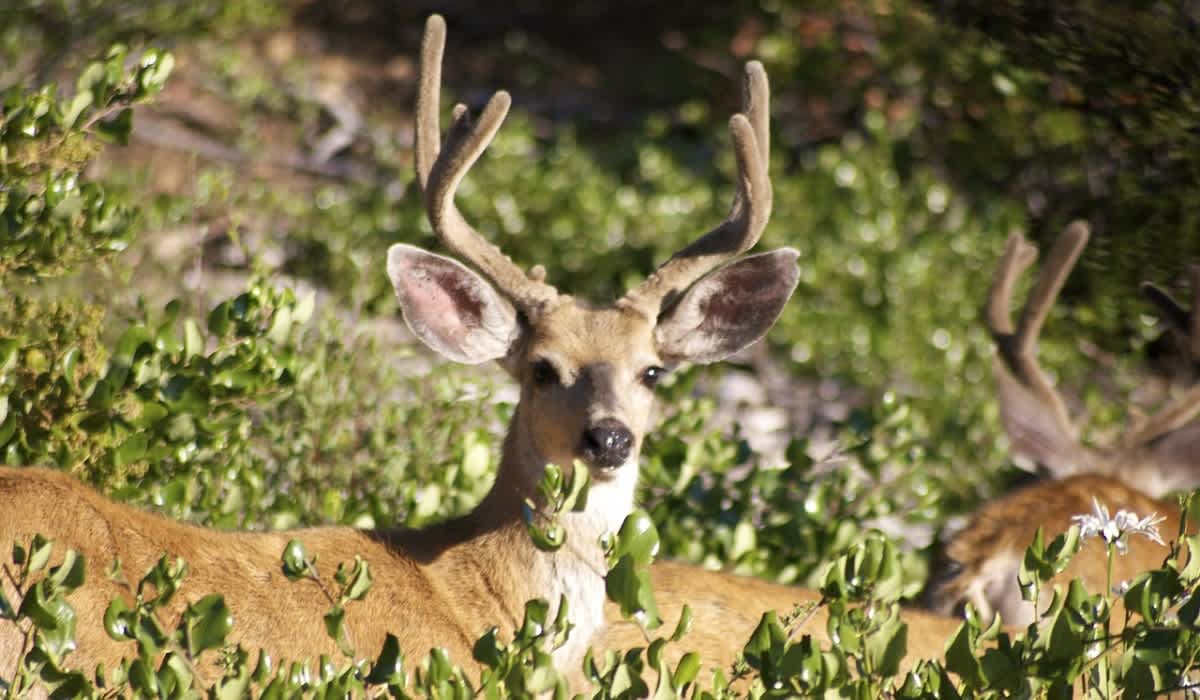10 Foods that Bucks Look for as Acorn Alternatives
OutdoorHub Reporters 08.09.17

Few things give deer hunters a more gratifying feeling than finding a woods loaded with oak and apple trees. It’s like hitting the jackpot . . . if the jackpot consisted of buck rubs, scrapes, hoof prints, and yes, even droppings gets a bowhunter’s heart pumping a little harder.
As we all know, however, we’re not all fortunate to have a piece of hunting property that’s littered with acorns, apples and deer sign. So what are the rest of us supposed to do?
The answer is start looking for alternative food sources; think like a deer.
When there aren’t any “easy” food sources around, what’s a deer going to eat? You don’t see them at the In-N-Out drive-thru, do you?
These food sources might be hard to find – we aren’t talking about apples or throwing down a pile of doughnuts after all – but you will certainly be rewarded for finding them. So grab a notebook, a pen, and write down these 10 examples of alternative food sources to keep your eyes peeled for in the woods:
Grapes:

Deer will munch on both the fruit and leaves of these plants, which are loaded with calcium and phosphorus. Look for a variety of grape species in sandy or rocky soils and uplands where the vines can grow up the base of trees and bushes.
Mushrooms:

Find a corner of the woods that’s scattered with mushrooms and you’ve just located a deer buffet. Rainy, damp weather really gets them going, so take a walk after some rain and pay attention to where you see them growing, you may want to hang a treestand nearby.
Greenbrier:

When the acorns are all gone, deer will often seek out this thorny vine as it offers good protein and stays green year-round!
Plum Thickets:

Again, no parts of this fruit tree go to waste. Deer will eat the fruit, leaves and stems of this native plant. They provide all the nutrients that deer look for, and even a little more. Sometimes deer will use these dense, shrubby thickets as cover during the winter.
Honeysuckle:

Honeysuckle provides solid protein levels and it stays green year-round. Find this tender foliage along fencelines, woods edges, or clear-cuts and you’ll be in good shape this deer season.
Brambles:

Both blackberry and raspberry bushes will bring deer to your property. They’ll eat the leaves while they’re green, but they can’t help but mow down a shrub full of berries.
Strawberry Bush:

Put it this way: If you find this shrub on your property, there likely aren’t any deer around. This plant can be comparable to ice cream for deer. They absolutely devour both the leaves and branches. You’ll have to get into the deep woods to find it, but the benefits far outweigh the hassle.
Mountain Laurel:

This one is generally found more in the South, and while not a favorite, deer will still feed on them when acorn numbers are low.
American Beautyberry:

This one is especially prevalent in the spring; you can’t miss these purple berry clusters if you walk by them. The deer definitely don’t!
Poison Ivy:

Now, we know you’re probably sitting there thinking, “They eat that crap?!” The answer is yes. It doesn’t make them itch like it does humans, and deer totally gobble it up. Its leaves are actually high in protein, and can be found abundantly across the eastern half of the country when acorns are scarce.

